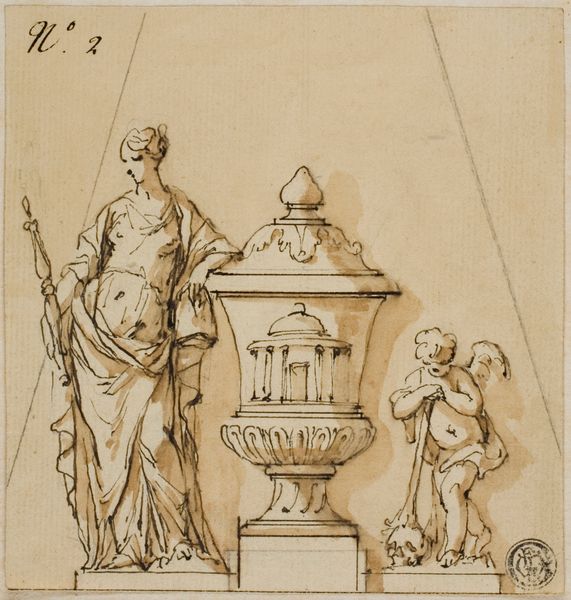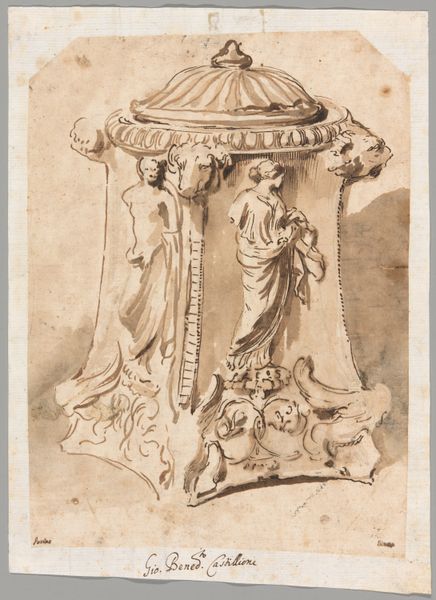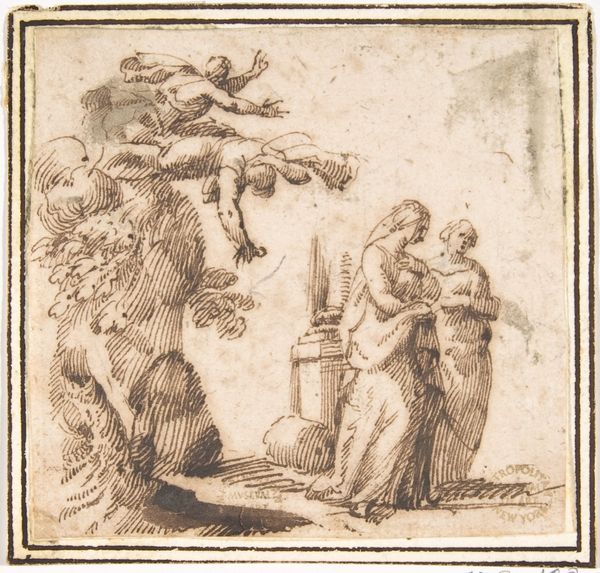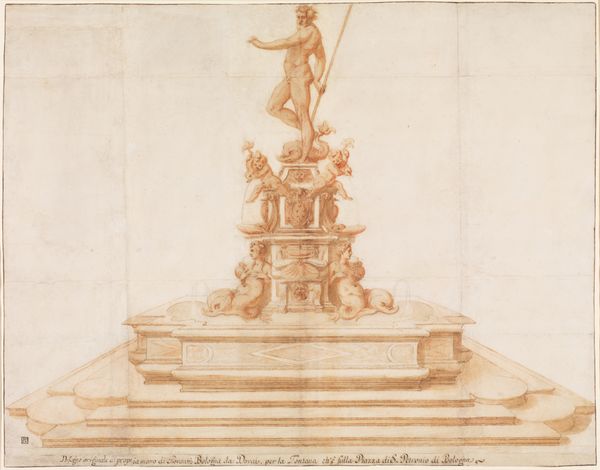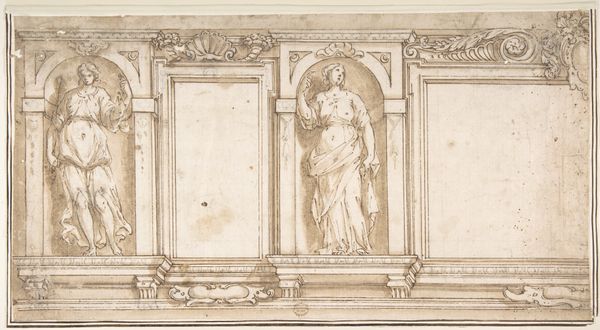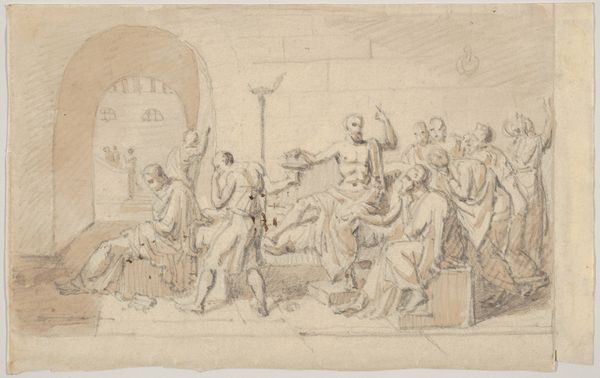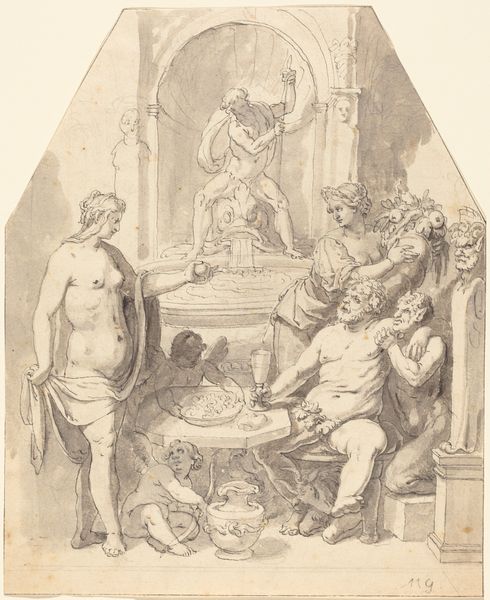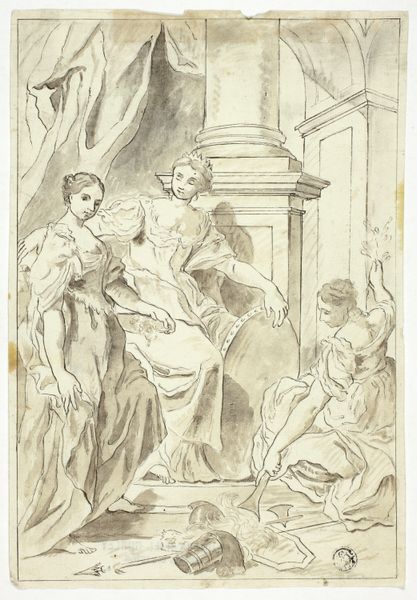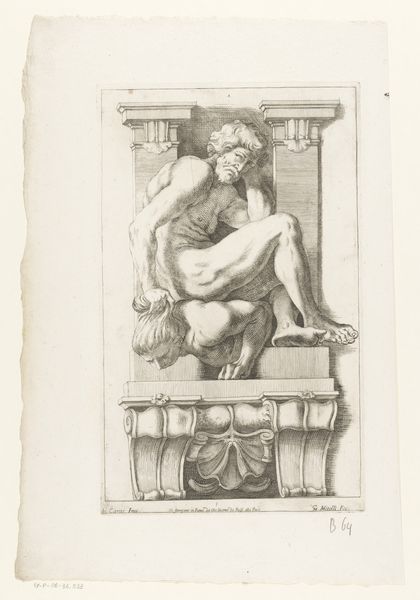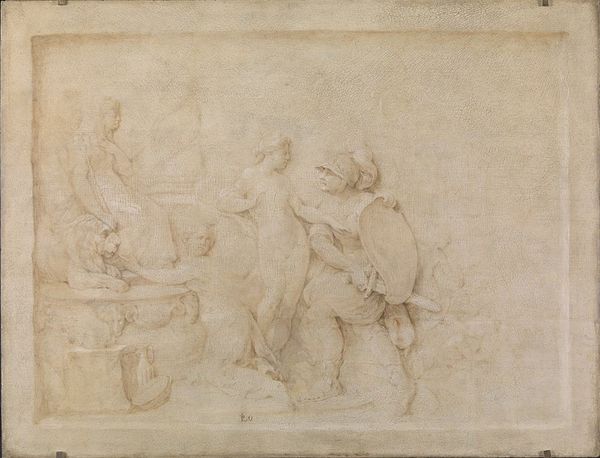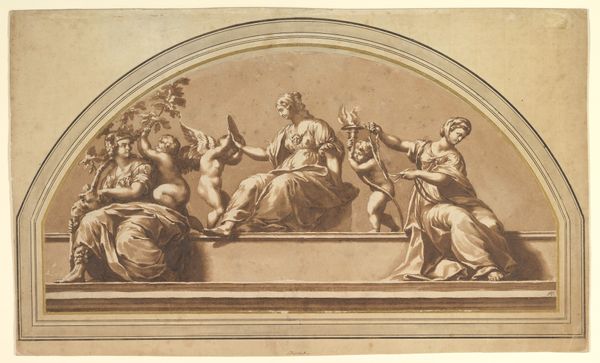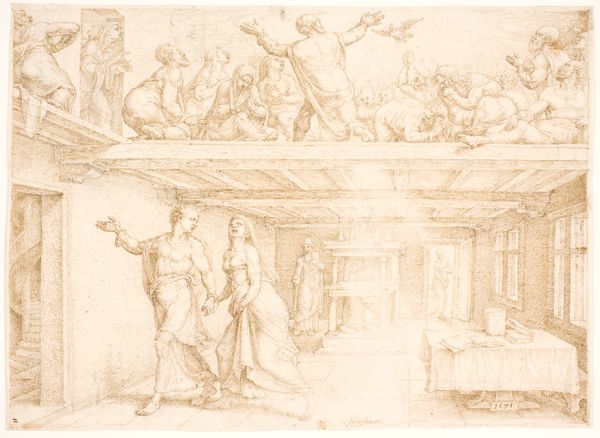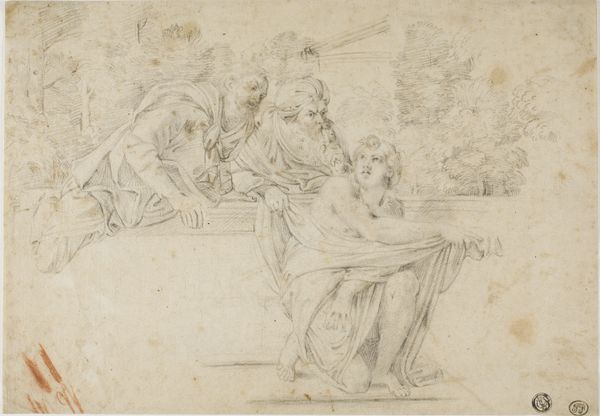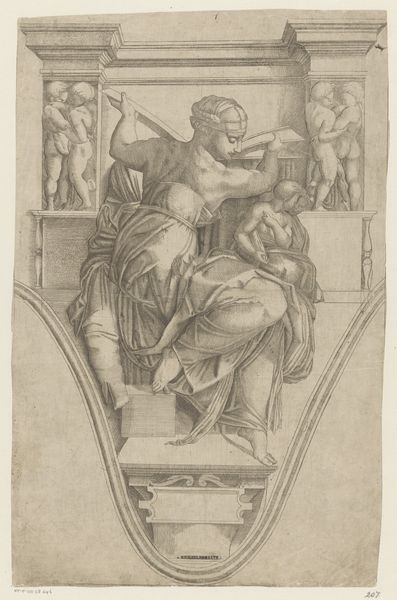
Design for a Funerary Monument with Fate, Putto, and Urn n.d.
0:00
0:00
drawing, print, paper, ink, pen
#
portrait
#
drawing
#
allegory
#
baroque
# print
#
classical-realism
#
figuration
#
paper
#
ink
#
pen
#
history-painting
Dimensions: 100 × 110 mm
Copyright: Public Domain
Curator: John Michael Rysbrack's drawing, "Design for a Funerary Monument with Fate, Putto, and Urn," presents a fascinating window into 18th-century memorial practices. Editor: The sepia ink and delicate pen work immediately create a sense of reverence and neoclassical restraint. The composition seems quite traditional, though. Curator: Absolutely, but look at how Rysbrack situates Fate, a putto extinguishing a torch, and the ornamented urn—symbols heavily laden with societal expectations around death, mourning, and the performance of grief, especially during this period. Fate’s somber leaning figure speaks volumes. Editor: The materials themselves contribute. Ink on paper allows for incredible detail—you can see the folds in the fabric draped on the figures. This highlights a tangible craft tradition in monument design. Do we know if this drawing ever made it to final form? Curator: It's unknown if this particular design was ever realized. Rysbrack likely produced many drawings like this for consideration. But the drawing shows how death was visualized—not as an end, but as a transition managed through these heavily gendered allegorical figures. It speaks to power structures. Editor: Yes, and consider the economics involved. Someone commissioned and paid for this level of detail. There's social status intertwined here through materials. This monument isn't just stone; it's an indicator of wealth and the labour used to create it, immortalising someone. Curator: It invites us to question whose stories are memorialized, how, and why. By examining funerary art through intersectional lenses, we confront our own preconceptions about death, status, and identity. Editor: Agreed. The artist selected these processes and these figures, resulting in more than just stone, pen and ink. There's meaning layered through the materiality, labor, and cultural impact. It is not simply an artwork; it is an intentional performance of social mores in the face of loss. Curator: Exactly, the monument and the sketch itself become sites for understanding how social power operated. Editor: Seeing the drawing in this light reveals so much more.
Comments
No comments
Be the first to comment and join the conversation on the ultimate creative platform.
